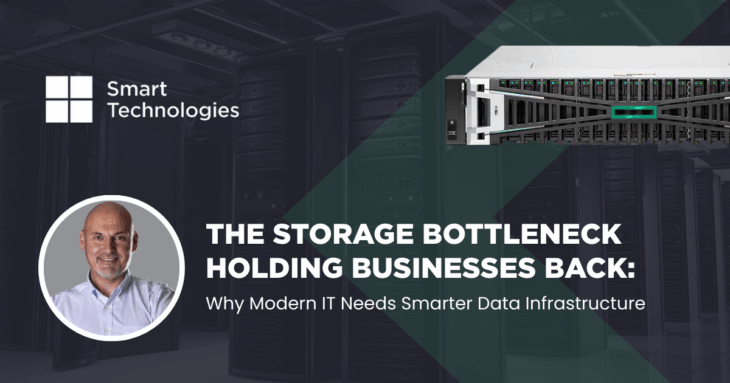
- November 26 2025
- Robert Azzopardi
Across the organisations we work within Malta, one pattern has become increasingly clear, data environments are growing fast, but storage strategies are not keeping up. Businesses are running more applications, supporting more users, and relying on more distributed systems, yet the underlying storage is often fragmented, inconsistent, and difficult to manage.
This build-up of complexity is what many IT teams now describe as modern data chaos. It slows down operations, increases risk, and turns storage into a bottleneck rather than a foundation.
Where storage complexity comes from
Complexity rarely arrives in one big moment. It accumulates quietly over time
- New workloads are added on separate systems
- Older hardware remains in use “just in case”
- Different departments expand at different speeds
- Capacity is increased reactively rather than strategically
Eventually, organisations end up with multiple platforms, inconsistent performance, and too many management tools. The environment becomes harder to scale and harder to trust.
Modern workloads outpace legacy storage
Today’s applications expect storage to be fast, reliable, and able to adapt quickly. Virtualisation, analytics, and high demand workloads put constant pressure on the underlying infrastructure.
Legacy architectures simply cannot respond with the flexibility required. They are stable, but rigid. Predictable, but slow to scale. And at a time when businesses need agility, this becomes a real limitation.
Why unified storage is becoming essential
IT teams increasingly want the same thing: simplicity. Not more systems or dashboards, but fewer. A single platform that can handle diverse workloads, scale without disruption, and deliver consistent performance.
Unified storage offers exactly that. It consolidates the environment, streamlines management, and brings clarity to what was previously a fragmented landscape. Most importantly, it prepares organisations for future demands rather than forcing them into constant catch up.
Where HPE Alletra MP b10000 makes the difference
The HPE Alletra MP b10000 is designed to address this shift directly. It replaces multiple systems with one adaptable, high performance platform that aligns with how modern environments actually operate.
- A single system for many workloads: Block, file, and more – all under one architecture.
- Consistent, unified management: One operational experience, less complexity, and clearer visibility.
- Scales smoothly as the business grows: Capacity and performance expand without redesigning the environment.
- Supports demanding applications with ease: Built for modern workloads and rapid changes.
- Reduces overhead and hardware sprawl: Improves efficiency both operationally and financially.
For many organisations, this approach brings an immediate sense of stability and control back to their infrastructure.
The benefit of thinking ahead
Modernising storage is not simply a hardware refresh. It is a shift to a more resilient, predictable, and scalable model. By consolidating fragmented environments, businesses typically gain
- Stronger performance
- Easier management
- Better resilience and availability
- Lower long-term costs
- Faster response to new business needs
It creates a foundation built for growth, not for firefighting.
Every organisation is dealing with increasing data demands, but complexity does not have to grow with it. With the right approach, storage can return to being a stable, strategic cornerstone of IT rather than a daily challenge.
The HPE Alletra MP b10000 is a strong example of how unified, modern infrastructure can help achieve that.
If you are looking to simplify your data environment or explore the benefits of a unified storage approach, book a call with our team, who are ready to assist.